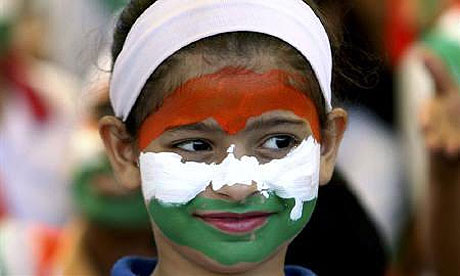Aborting female foetuses in India means there are 7.1 million fewer girls than boys aged up to six.
The gender-gap has widened by a million in the last 10 years.
Selective sex selection Indian families where the first child has been a girl, more and more parents with access to prenatal ultrasound testing are sex-selecting their second child. If the child is a female they abort it in the hope that a subsequent pregnancy will yield a boy, said the study, published in The Lancet.
If the first child was a boy, however, there was no drop in the girl-boy ratio for the second child, showing that families – especially those better off and more educated – are far more likely to abort girls if the firstborn is also female.
The increasingly lopsided ratio of girls to boys is larger in wealthy households than poorer ones, the researchers reported.
Between 1980 and 2010, they estimate, four to 12 million girls were aborted because of their sex.
The female shortfall for the zero-to-six age bracket was 6.0 million in 2001, and 4.2 million in 1991.
“Increases in selective abortion of girls are probably because of persistent son preference combined with decreases in fertility,” the authors say.
The mean number of children per Indian woman fell from 3.8 in 1990 to 2.6 in 2008.
Selective abortion of female foetuses accounts for two to four per cent of female pregnancies in India, roughly 300,000 to 600,000 per year out of 13.3 to 13.7 million carrying a girl in 2010, the study found.
Declines were much greater in mothers who had gone to school for at least 10 years than in mothers with no education at all. The same trend held true for wealthier households compared to poorer ones.
“The financial incentive for physicians to undertake this illegal activity seems to be far greater than the penalties associated with breaking the law,” S.V. Subramanian of the Harvard School of Public Health said in a commentary, also in The Lancet.
In the study, researchers led by Prabhat Jha of the Centre for Global Health at the University of Toronto, analysed census data from 2011 and earlier.
Source
Additional reading- Promoting the value of the girl child
- Caste council vows to fight female feticide
- Catholics pledge to women in distress
- Economically booming India is failing its daughters
- 3000 female foetuses aborted in Taiwan
- Preference for boys further skews India's sex ratio (Reuters 2001)
News category: World.




